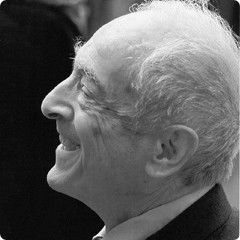Columbia's Rare Book & Manuscript Library Acquires Papers of Art Critic Meyer Schapiro
NEW YORK, June 1, 2007 Columbia University’s Rare Book & Manuscript Library has acquired the papers of Meyer Schapiro (1904-1996) educator, art critic, and professor of fine arts.

"More than America’s greatest art historian, Meyer Schapiro was an intellectual deeply engaged in the worlds of politics and philosophy as well as art, in active correspondence with major protagonists of twentieth-century thought and art. His papers document that complex engagement and will prove an extraordinarily rich resource for scholars in all fields that Schapiro touched,” said David Rosand, Meyer Schapiro Professor of Art History at Columbia.
Meyer Schapiro was a distinguished teacher, lecturer, and scholar, who influenced generations of scholars and critics the world over, particularly in the areas of medieval and modern art. Affiliated with Columbia since he enrolled as a freshman in 1920 at age sixteen, he earned three degrees at the University, including a Ph.D. in 1929, with a dissertation on the Romanesque sculpture of Moissac, an abbey in southwestern France. Schapiro began teaching art history at Columbia in 1928, becoming a full professor in 1952. He was named University Professor, Columbia’s highest rank, in 1965 and became University Professor Emeritus in 1973.
The Meyer Schapiro papers are composed primarily of drafts of lectures, manuscripts, and published and unpublished articles. Schapiro's lectures were given at major academic institutions, such as Columbia University, New York University, Harvard University and Oxford as well as fine arts museums like the Metropolitan Museum of Art and the Museum of Modern Art. Lecture and article topics include Seurat, Mondrian Theory, Matisse, Cezanne, Albert Einstein and Cubism, Abstract Art, Nazism and Jewish Art, Art and Politics, Impressionism, Romanesque Art, and Philosophy in Art. These drafts are often accompanied by corrections, notes, slide lists, and research photographs.
Also included in the collection is substantial correspondence with family members, arts institutions such as the Guggenheim Museum, the Metropolitan Museum of Art, the MOMA, and the Jewish Museum, and other artists and intellectuals. Some of the more notable individuals include Marc Chagall, Nicola Chiaromonte, James T. Farrell, Jean Helion, C.L.R. James, Erwin Panofsky, Gershon Sholem, and Josef Sima.
The papers come to the Rare Book & Manuscript Library as a bequest from Lilian Milgram Schapiro, Meyer’s late wife, and complement other Schapiro holdings in the RBML including hundreds of tapes of lectures given over his long career.
Columbia University Libraries, is one of the top ten academic library systems in the nation, with 9.2 million volumes, over 65,650 serials, as well as extensive collections of electronic resources, manuscripts, rare books, microforms, and other nonprint formats. The collections and services are organized into 25 libraries, supporting specific academic or professional disciplines. Columbia Libraries employs more than 400 professional and support staff to assist faculty, students, and researchers in their academic endeavors. The Libraries’ website at www.columbia.edu/cu/lweb/ is a gateway to its print and electronic collections and to its services.
The Rare Book & Manuscript Library owns over 500,000 rare books in some 20 book collections and almost 28 million manuscripts in nearly 3,000 separate manuscript collections. It is particularly strong in English and American literature and history, classical authors, children‘s literature, education, mathematics and astronomy, economics and banking, photography, the history of printing, New York City politics, librarianship, and the performing arts. Individual collections are as eclectic as they are extensive. For more information, please see: www.columbia.edu/cu/lweb/indiv/rbml/index.html
###